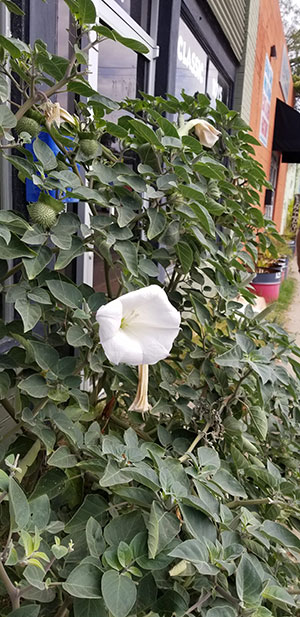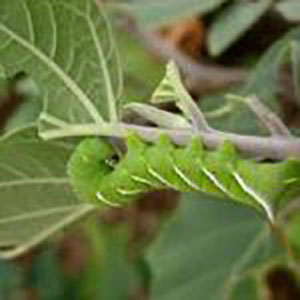15 October 2019
Last Sunday, my husband and I ventured over to East Austin for brunch. As we walked down the sidewalk to a great little place called Cenote–honest-to-god, the applesauce pancakes are one of the best things I’ve ever put in my mouth–I spotted a large moonflower plant, and, then, even better, a hawkmoth caterpillar.
My fascination with hawkmoths led me to write an essay that interweaves information about these mysterious insects with the story of my older son’s addiction. Thankfully, (that word doesn’t begin to describe my gratitude) my son is clean and sober now.)
Here’s a relevant excerpt from the essay:
“In New Mexico, hawk moths pollinate the white trumpet flower of the sacred Datura plant. In this area, the Datura is most often referred to as jimson weed. Out in the bosque, these sprawling plants grow wild. My stepmother carefully cultivated a Texas specimen she called a moonflower, an apt name for the enormous blooms that open at dusk and glow in the celestial light. In the high desert, where so much of the landscape is tan, brown, and tannish brown, the flowers captivate. Georgia O’Keeffe captured their milky beauty in several of her paintings.
Not many people know that Datura is a known hallucinogen. Even the gray-green leaves are poisonous, lethally so. Hawkmoths are mostly immune to the toxin, but botanists have speculated that some unfortunates become “jimson weed junkies.” Observers have described the erratic behavior of intoxicated moths: some will nod off in the blossom and nap for hours. Once they do take to the air, they frequently lose direction or even fall to the ground.
Recently, I read that the larvae of certain hawk moths can tolerate high levels of toxins. The tobacco hornworm, for instance, can rapidly detoxify by excreting nicotine from its tissues. Whereas the nicotine in the tobacco plant leaf is toxic to most insects, the hornworm has evolved a special mechanism for selectively sequestering and secreting nicotine. Different moths metabolize toxins differently. Some cannot withstand what others are unfazed by. It’s a fact of nature.”





